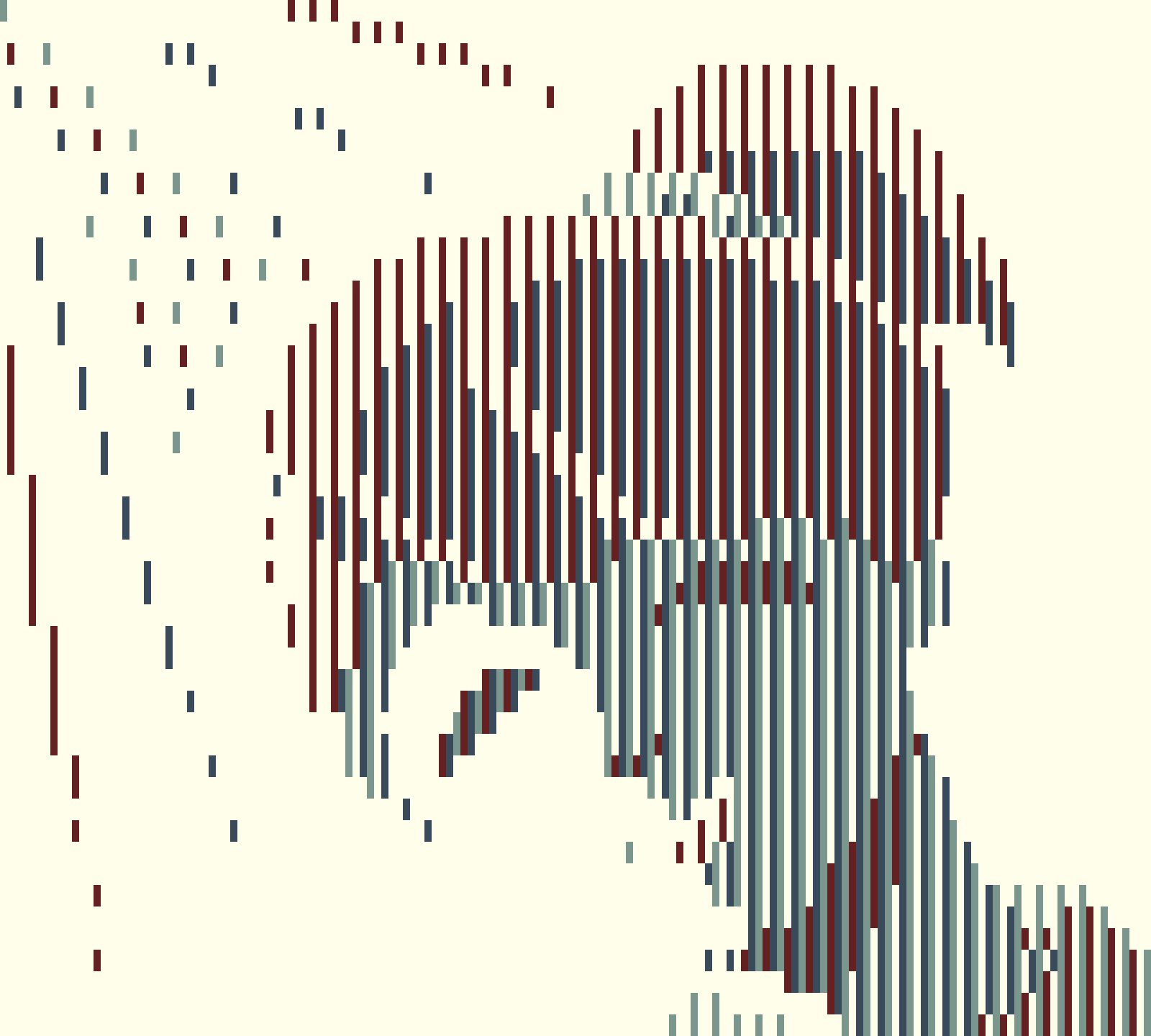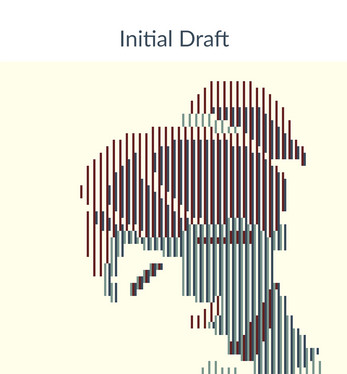
Rain Gets Better — GB Pixel Art Jam 2024 Submission
A downloadable project
Rain Gets Better was born out of a building interest in the way many beloved 8-bit games are often displayed: through RGB strip pixels.
The reveal of a jam's theme, or in this case, a jam's palettes, is always exciting. With the theme this year being "color" and there being four unique palettes to choose from, I wanted to take this opportunity to explore and see what neat things can be achieved with the tools at hand. I imagine that's what a lot of Game Boy developers feel as well, but the difference between this jam and game development is that there is no larger framework that this needs to fit into. When making full screen art for a game's cutscene, it is often made for practical purposes: to communicate information to the player. And it'll often be similar in art style to that of the gameplay (which has its own restrictions), understandably so. But this jam is an invitation for folks to create something that stands on its own. Being tied only to the rules of the jam, this opens up the door for many possibilities.
Shortly after seeing the palettes, I wondered how I could mix them together to create something different. My first thought was to utilize really tight dithering and lattice work. I think that would have been a fun technique for the cyan/magenta palette. But ultimately, I chose the "Blood Tide" palette with the red, green, blue, and cream. The reason being that I could attempt to create various colors in the same manner as an RGB-based display, such as the original Game Boy Color. This is a process that I've been increasingly fascinated by. Each pixel in the GBC's display is made up of three adjacent strips: red, green, blue. They illuminate at various levels of brightnesses as to, in combination, look like a singular unique color from far away. There are a few challenges in recreating that through software though.
Given that I'm using an RGB display (hardware) to recreate a pseudo RGB display (via software), there is an inherent loss of resolution. Each RGB strip in Rain Gets Better consist of three pixels (9x the scale of the actual hardware). However, the size of the screen itself isn't changing, so now each "pixel" takes up more room. With this approach, the standard resolution of the Game Boy is changed from 160x144 real pixels to 53.333x48 of these faux pixels. In other words, one third of the resolution. But! What was lost in resolution was gained in color depth.
With these four colors of red, green, blue, and cream, eight unique faux pixels were created. Well, sort of. An actual RGB display would dim and brighten the various strips of a pixel to dial in a combination that forms a singular, specific color. However, there is no option here to dim or brighten, only of which color to display. Seeing as these RBG strips in the faux pixel can't be turned "off" so to speak, this naturally leaves the neutral cream color to be the "off" option. Ironically, white is a combination of all three colors together in RGB displays, but that's beside the point. Turning "off" some of the colors allowed for eight total combinations.
To create the piece, I first painted it digitally in Procreate using the eight colors. Next, I brought that exported image into Aseprite and used it as a paint-by-numbers guide for my various types of faux pixel blocks (remember, each one being 3x3 of real pixels). The last thing to do was to clean it up. This included a pseudo dithering technique of using a faux pixel containing a single strip that might be a different color than what it is adjacent to, but in terms of the composition, it helps create a smoother line or softer shadow.
I'm very happy with how it came out. The trial and error process of figuring out how I want to emulate an RGB display was a lot fun and is an example of what I love about developing on the Game Boy. Despite enjoying the process, I was expecting that the quality of the final result may suffer from the self-imposed limitations. But I ended up being surprised at just how detailed of an impression of shapes and shadows was able to be achieved. I mean for that to speak to the remarkable depth that seemingly shallow limitations often have. For me, it,—like many creations on Game Boy—is a further example of how limitations can go as deep as one is willing to take them. This was a learning process for me, and I'm sure there are many artists much more talented than I that could squeeze even more life out of this faux RGB system.
At the end of the day, it is another successful GB Pixel Art Jam in the books! One of exploring limits and discovering what is possible within them. Now, I look forward to seeing everyone else's wonderful creations!
Download
Click download now to get access to the following files:








Comments
Log in with itch.io to leave a comment.
Really interesting and definitely a stand-out when it comes to technique!
This was fascinating. I didn't expect to be surprised by such a good use of optical illusions again, after that submission last year, but here I am again saying "Wow". The use of colors really gives the impression that there is more than what you are actually seeing, similar to what happens with RGB monitors.
This reminds me that I didn't really like the "Blood Tide" color palette at first (apart from its peculiar name and its red tones that are stronger than they should be), but pixel art like this made me appreciate having chosen that palette even more.
Reading the information on this page, I remembered an interesting fact about the Game Boy. The Game Boy was one of the few video games at the time to have games transmitted to an LCD screen. Since almost everyone who had a TV at home at the time had a CRT, this meant that the developers designed the art style for such a screen, and not for LCD or OLED monitors like we have now. This made effects like Dithering common, since the PPU of an analog video game signal favored this type of image, so pixel art was not intended to be "square".
For the Game Boy this was different, mainly due to the cost of small LCD screens compared to CRT. However, with the launch of the Super Game Boy, compatible games would have to be designed for both screens.
I think it is up to each developer to highlight what sparks their interest the most. But this makes me wonder what other unexplored effects other types of screens have.
Anyway, good job, I loved this pixel art!
I am glad you enjoy it!
While I didn't intend on doing something as off the wall as last year, it did lean that way a bit since I did want to explore fun approaches to the theme. These jams are, in my eyes, an opportunity to get a little funky so I will likely take a similar approach next year as well.
Interesting stuff about the screen types, thanks for sharing! Talking about the use of the original Game Boy's LCD display made me think of the Game & Watch and what a different style that is. Video games, and handheld devices in particular, are a platform to build something that feels like so much more than displays. Displays that are often, in comparison, much smaller than the vast worlds that they spark in a player's imagination.
I like what you mention about each developer highlighting what sparks their interest the most. That feels particularly apt for this jam as I've seen a lot of different approaches to the art. Each piece reflects their respective creator and showcases something new to the viewer. It's been a blast seeing all of them!
This is insanely cool!!! I wouldn't have thought it would turn out with such clear shapes either, but the image is very clear. I'm very impressed!
I appreciate the kind words :) Given that it turned out to be more versatile of a system than expected, I'd like to try do to more with it (or a similar system). And I'd certainly be curious of how others would approach it!
WOAH I love this Eric! What a genius use of the restriction and palette!! :O I would love to see even more art like this, if you ever feel like creating more!
Thank you, glad you like it! I think i'd like to play around more with this sour of thing in the future, using set blocks to build something and all. Maybe RGB, maybe something else.